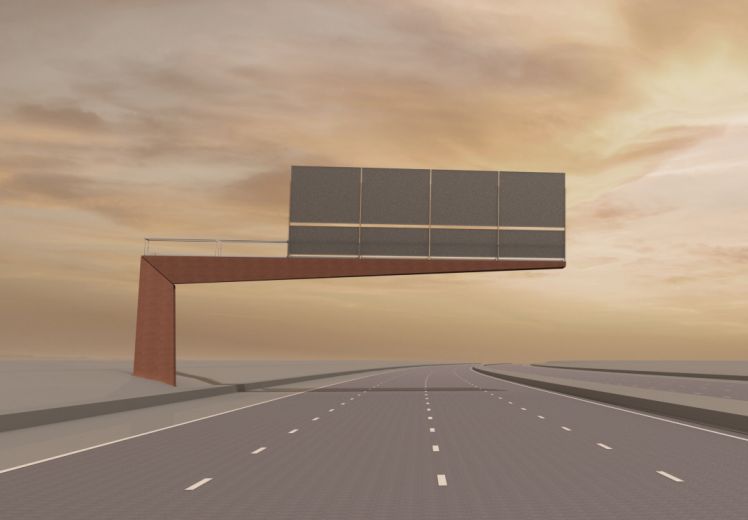The competition tasked entrants to design the ‘gantry of the future’ and was organised alongside the Royal Institute of British Architects (RIBA).
In total, 32 architectural firms sent in their applications from across the UK and Europe.
According to National Highways, ‘Millions of drivers see gantries every day as a routine part of their journeys – and probably don’t give them much thought. However, they are vital to providing safe and reliable journeys and giving drivers information they need to reach their destinations’.
This is why National Highways has been looking for a more ‘streamlined, elegant and consistent visual appearance for roadside gantries to enhance the public’s driving experience’.
They were concerned that the current gantries are heavily engineered, and focus on function over practicality. They were looking to change this so that the future of motorways will be more complementary of National Highways wider goals.
In the next few years, they want to create a more efficient standardised structure that also has a reduced carbon footprint and lower operational and maintenance costs.
The winning entry, created by Useful Studio, features a simple, pared-back design approach.
It was selected as the top choice for its ‘elegance and simplicity, and how cohesive the design concept was across a range of different structures’.
The design is projected to reduce the carbon footprint compared to current gantries.
According to the winner’s announcement, Useful Studio will now work with National Highways to develop their design concept, with a view to it becoming the standard design for new roads and major upgrades from around two years’ time.
The judging panel were impressed with the winning entry’s design, which will use less steel than existing gantries – meaning less embodied carbon, and the use of pre-weathered rather than painted steel.
The design follows existing best practice from other highways structures and ages better than painted steel, meaning potentially lower maintenance requirements and fewer lane closures.
This will benefit drivers across motorways and A roads by reducing traffic and delays.
According to the entry, the gantries can be adapted for different types of structures including those spanning all carriageways and the roadside signs.
Britain’s road network currently has over 3,500 gantries, but won’t be immediately replacing structures.
National Highways Executive Director for Operations Duncan Smith said: “This is a great opportunity for us to develop a more streamlined, elegant, and consistent visual appearance for roadside gantries to enhance drivers’ experience when driving on England’s motorways and Major A-roads.
“Existing designs tend to emphasise function over form, our challenge is to create innovative structures that can accommodate the required signage and equipment that are more sympathetic to the environment.
“In selecting Useful Studio as the winner, the judging panel admired the simplicity and elegance of the pared-back design approach, and the opportunities it presented in terms of a resource efficient, standardised, coherent suite of gantry structures that would be potentially sympathetic to a broad range of settings and contexts.”
National Highways stated that the new structures could be part of new road upgrades delivered in three years’ time.
What do you make of the winning entry? What other areas of the road network need updating? Leave your comments below.

RAC sale – up to 33% off*
• Roadside cover from £5.29 a month†
• We get to most breakdowns in 60 mins or less
• Our patrols fix 4/5 breakdowns on the spot











